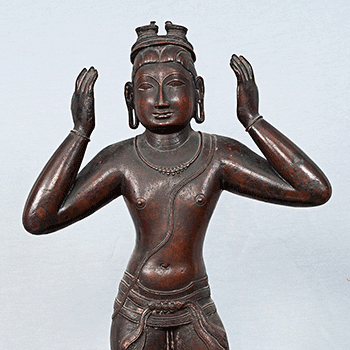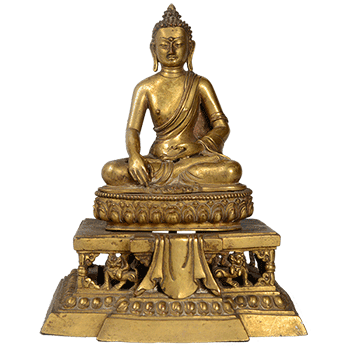This Image of Manikkavacakar (Saiva Saint) is an exquisite bronze sculpture which finds its origin in Tamil Nadu and dates back to 12 CE. It was sculpted under the patronage of the Chola dynasty. It is 50.2cm in height, 21.8cm in width and 20.8cm in depth.
It is currently on display in the Gallery of Bronzes at the National Museum, New Delhi.




























